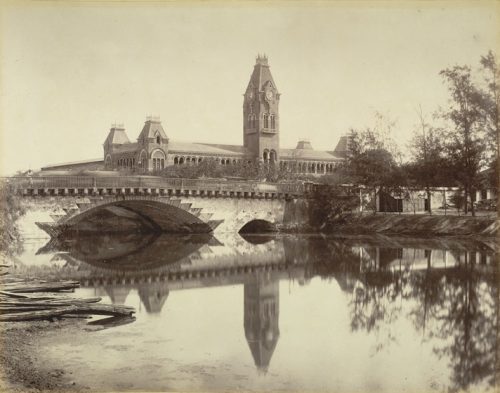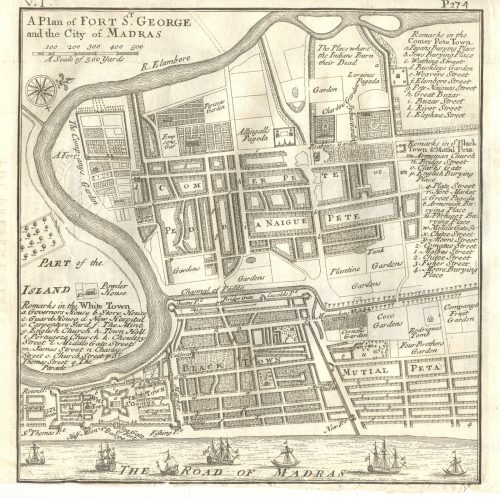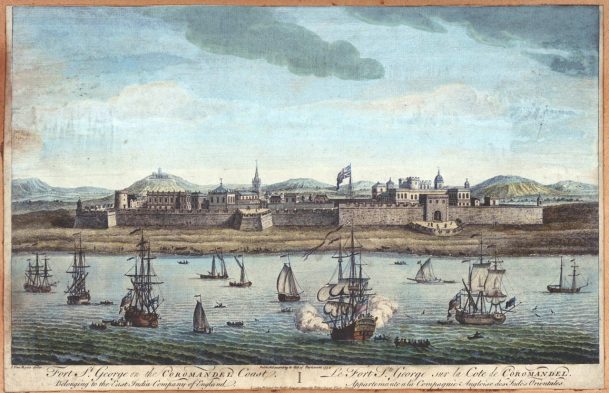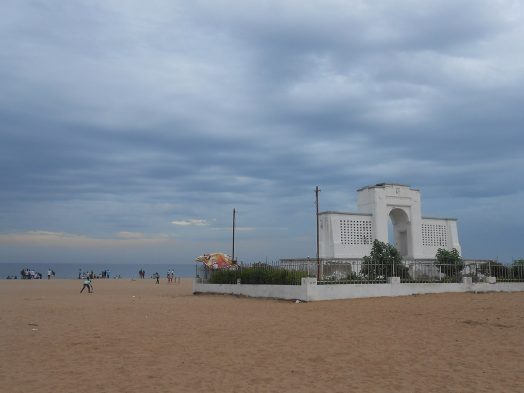Chennai’s changing! Or should we say Madras is marching ahead? As time goes on, place names change too. For many reasons… political, roll-off-the-tongue-ability and sometimes, for no known reason. Here are some that are essentially Chennai.

Shakespeare had it right when he asked, “What’s in a name?”. He could have had Chennai in mind then. As a people, we Chennaiites are not easily perturbed by inconsistencies in our names. Chennai, Madras… we use the one that comes off our tongues at that moment without a second thought. As to how the city came to get these names, there is no dearth of stories. From Chennappa Naik, Chennakeshava Perumal, Madarasen Raja, Madre de dios, the Madeiros family, a madrassa… the list is endless. So which of these really contributed to the city’s name? Your guess is as good as mine. Amidst all the brouhaha about reclaiming the original pre-colonial names, we sometimes confuse which came first, or which was less colonial in origin. In this case, it does seem very plausible that it was the name Madraspatnam. That name was already in use when the British first built a Fort, the Fort St. George, around which developed the city we know today as Chennai.


Chennai is a young city that came up courtesy the British. It has been home to many peoples from many lands. And several roads and locality names are reminiscent of its colonial roots. Elliot’s Beach, Georgetown, Mowbray’s Road, Montieth Road – the list goes on. Today, many of these have been rechristened, in keeping with the trend to remove signs of a colonial past. This may not be a bad thing, but it is definitely challenging. Indian names can be long, sometimes so long that even fitting them into one signboard is hard. Henry Chamier came to India as a civil servant and rose to the position of a member of the Madras Council, and even had a road named in his honour, Chamier’s Road. The road is now called Pasumpon MuthuramalingaThevar Salai, in honour of the gentleman who is considered the patriarch of the Thevar community, and the leader of the Forward Bloc party in Tamil Nadu. Fitting thirteen long syllables into a standard sized signboard must have taken some effort!

Another interesting story is that of Cenotaph Road. With a name like that you would expect to find a cenotaph – a memorial for a dead person whose remains are elsewhere. You can walk up and down that busy road and not find a trace of any cenotaph. There isn’t one. However, there WAS one, a classic granite structure with a domed top, sheltering a statue of Lord Cornwallis inside. Cenotaph road got its name because of this. Over time, the cupola and statue were dismantled and shifted – the cupola went to the Fort area, where you can still see it, close to the entrance. The marble statue was moved around a good bit for various reasons, until it was finally made to stand in solitary splendour under the staircase in the Fort Museum. One can only hope that this decorated gentleman has finally found peace, even if it is in just a stairwell.
The ‘Old names for new’ is an exercise happening everywhere, often prone to political influences. A more recent exercise was the ‘remove caste names’ fad. All long names suddenly got shortened. Kutty Pillai street became Kutti street (no reflection on the length of the road), Linga Street and Thambu street lost their “chetty” suffix, and so on. Earlier, West Mambalam had a Balakrishna Naicken Street and a Balakrishna Mudali Street, and everyone knew which was which. Now, it has two Balakrishnan Streets, and a whole lot of confusion. Ah well, you gain some and you lose some.
And then there is the sonorous Thadandar Nagar in Saidapet, reminding one of a noisy thunder storm. How chagrined was I when I came to know that it was originally named after Sir Charles Todhunter, former Chief Secretary of the Madras Government, and a much decorated British civil servant! Then again, not all street names revolve around the British. There is Avadi, an acronym for Armoured Vehicles and Ammunition Depot of India, supposedly a British establishment. Surprise, surprise, Avadi is a clever backronym! Avadi existed long before the British came there. Mylapore owes its origins to the story of Goddess Parvathi being cursed by Lord Shiva to be born in these parts as a peacock (Myil in Tamil). The beautiful Poovirundhavalli (translated as: the place where flowers bloomed) was mutated to Poonamallee by the British, and remains so till date. But the Tamils got their revenge: An essentially English name which was shorn of its beauty and cut real short is Hamilton Bridge which somehow became Ambattan Vaaravadhi in Tamil, and got translated (literally) again as Barber’s Bridge.

Well, at least no one has started applying numerology to street names (yet). Imagine an Annnna Salai or a Raajaajii Road! Till then, let’s hold on to the old and use the new judiciously, and hope that too much of Chennai history will not be erased with this desire to change names.
[If you liked this article, here are some more on similar subjects that may be of interest to you:
Do you know how Balfour Road got named so?]
How did Mylapore get its name?
Or why the Vivekanandar Illam is also called the Ice House?
[For more on Chennai’s origins see ; Chennai Genesis and what do you make of Chennai ]
And Shakespeare is still right for he went on to say that a rose by any name would smell as sweet, So what’s in a name?
Comments are closed.
Archives
- January 2022
- December 2021
- November 2021
- August 2021
- March 2021
- February 2021
- January 2021
- December 2020
- November 2020
- October 2020
- September 2020
- August 2020
- April 2020
- March 2020
- February 2020
- January 2020
- November 2019
- October 2019
- September 2019
- August 2019
- July 2019
- June 2019
- August 2017
- February 2017
- January 2017
- October 2013
Featured Posts
- Tales that pots tell: Keeladi excavations AUGUST 18, 2021
- The Last Grand Nawab: Wallajah FEBRUARY 10, 2021
- How Tej Singh became Raja Desingu of Gingee FEBRUARY 5, 2021
- How Shahjahan seized the Mughal throne JANUARY 28, 2021
- Alai Darwaza – Qutub Minar Complex, Delhi NOVEMBER 21, 2020
- Marking History through British buildings NOVEMBER 17, 2020
- The last great queen of Travancore NOVEMBER 7, 2020
- Brahmi and the evolution of scripts OCTOBER 15, 2020
- The Cambodian King of Kanchipuram OCTOBER 14, 2020
- James Prinsep – the man who read the writing on the wall OCTOBER 10, 2020
- Mariamman – the Village Goddess who travelled SEPTEMBER 30, 2020
- Misnamed Monuments of Mamallapuram SEPTEMBER 28, 2020









I conceive this website has some very good info for everyone : D.